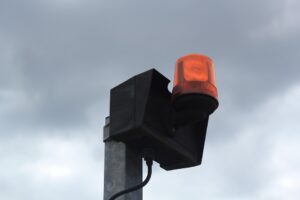From Kidneys to Urinary Tracts: A Journey Through the Excretory System
Introduction
The human body is a complex machine that efficiently manages various functions, including the critical task of waste removal. The excretory system, often neglected in discussions regarding health and biology, plays a vital role in maintaining the body’s internal environment. This article explores the journey of waste products from the kidneys, through the urinary tract, to their eventual expulsion from the body. By analyzing the structure, function, and importance of each component, we can gain a deeper understanding of this essential biological system.
The Functions of the Excretory System
The excretory system primarily serves to eliminate waste and regulate the body’s electrolyte levels, blood pressure, and overall homeostasis. It does this through several key functions:
- Filtration of Blood: The kidneys filter out waste products and excess substances from the blood.
- Reabsorption: Essential nutrients and other valuable compounds are reabsorbed back into the bloodstream.
- Secretion: Further waste products are secreted into the urine.
- Excretion: The final product is the urine, which is expelled from the urinary tract.
These functions work in synergy to ensure that harmful substances do not accumulate within the body.
The Kidneys: The Body’s Natural Filters
Structure of the Kidneys
The kidneys are two bean-shaped organs located on either side of the spine, just below the rib cage. Each kidney is about 4-5 inches long and consists of three primary regions: the outer cortex, the inner medulla, and the renal pelvis. The functional unit of the kidney is the nephron, with about 1 million nephrons in each kidney.
Function of the Kidneys
The kidneys perform several essential functions, including:
- Blood Filtration: The nephrons filter blood to remove waste products, including urea, creatinine, and excess ions.
- Electrolyte Balance: The kidneys regulate levels of sodium, potassium, calcium, and other electrolytes essential for various bodily functions.
- Acid-Base Balance: Kidneys help maintain the body’s pH level by excreting hydrogen ions and reabsorbing bicarbonate.
- Fluid Regulation: The kidneys control the volume of fluids in the body, responding to hydration levels by adjusting urine concentration.
Understanding these functions highlights the kidneys’ role in homeostasis and overall health.
The Journey of Urine Formation
Glomerular Filtration
The journey of urine begins in the glomerulus, a network of tiny blood vessels within the nephron. Blood enters the glomerulus, where it is filtered. The filtration process allows small substances, like water, electrolytes, and small molecules, to pass through while retaining larger molecules, such as proteins and blood cells. The resulting fluid, called glomerular filtrate, moves into the renal tubule for further processing.
Tubular Reabsorption
Once in the renal tubule, glomerular filtrate travels through several segments, including the proximal convoluted tubule, loop of Henle, and distal convoluted tubule. Here, vital substances are reabsorbed into the bloodstream:
- Proximal Convoluted Tubule: Approximately 65% of the filtered water and a considerable amount of electrolytes and nutrients are reabsorbed.
- Loop of Henle: Plays a crucial role in concentrating urine and conserving water.
- Distal Convoluted Tubule: Further adjusts ion concentrations and water balance, responding to hormones like aldosterone.
Tubular Secretion
In addition to reabsorption, the renal tubule also secretes additional waste products from the bloodstream into the filtrate. This process is vital for removing substances like hydrogen ions, potassium, and certain drugs.
Excretion
Finally, the modified filtrate, which is now urine, flows into the renal pelvis and exits the kidney through the ureters, the tubes that transport urine to the bladder.
The Urinary Bladder: Temporary Storage
Structure
The urinary bladder is a muscular sac located in the pelvis, capable of expanding and contracting to store and release urine. It has several layers, including the mucosa, muscularis, and adventitia.
Function
The bladder serves as a temporary storage facility for urine. When filled, stretch receptors signal the brain, prompting the urge to urinate. The coordination between the bladder muscles and the urinary sphincters regulates the release of urine.
The Urinary Tract: The Final Pathway
Ureters
The ureters are muscular tubes that transport urine from the kidneys to the bladder. They utilize peristaltic contractions to move urine efficiently.
Urethra
The urethra is the final part of the urinary tract, responsible for expelling urine from the body. In males, it also serves as a passage for semen. The urethra has a sphincter mechanism that allows for voluntary control over urination.
Expulsion of Urine
The act of urination, or micturition, involves a reflexive response that coordinates the contraction of bladder muscles and relaxation of the sphincters, enabling the expulsion of urine.
Disorders of the Excretory System
Kidney Stones
Kidney stones are hard deposits of minerals and salts that form in the kidneys, resulting in severe pain and complications. They may be caused by dehydration, certain diets, or genetic factors.
Urinary Tract Infections (UTIs)
UTIs occur when bacteria enter the urinary tract, leading to symptoms like burning during urination, frequent urge, and cloudy urine. Women are more susceptible due to anatomical differences.
Chronic Kidney Disease (CKD)
CKD is a progressive loss of kidney function over time, often caused by diabetes, high blood pressure, or other underlying health conditions. It can lead to severe health complications and requires long-term management.
Incontinence
Urinary incontinence is the involuntary loss of urine, which can significantly impact quality of life. Causes vary from age-related changes to neurological disorders or weakened pelvic floor muscles.
The Importance of Hydration
Proper hydration directly influences kidney function and urine production. Water is essential for the kidneys to effectively filter waste and maintain electrolyte balance. Dehydration can lead to concentrated urine, increasing the risk of kidney stones and other complications.
Conclusion
The excretory system, encompassing the kidneys, urinary tract, bladder, and urethra, is integral to human health. By understanding its structure and function, we can appreciate the complexity of waste removal and the importance of maintaining good kidney health. Awareness of potential disorders and the significance of hydration can help individuals lead healthier lives, emphasizing the need for regular medical check-ups for kidney function assessments.
In recent years, the study of the excretory system has expanded, revealing more about its nuances and connections to overall wellness. As science progresses, our understanding of kidney health, hydration, and lifestyle choices will continue to evolve, ultimately enhancing the quality of life for many.
References
- Kidney Research UK, Understanding Kidneys
- National Institute of Diabetes and Digestive and Kidney Diseases, The Kidneys
- American Urological Association, Urology Care Foundation
- Cleveland Clinic, Ureter and Urethra Overview
- Mayo Clinic, Urinary Tract Infection
This guide aims to provide a thorough overview of the excretory system, encouraging a proactive approach to kidney health and awareness of urinary conditions.


























Add Comment